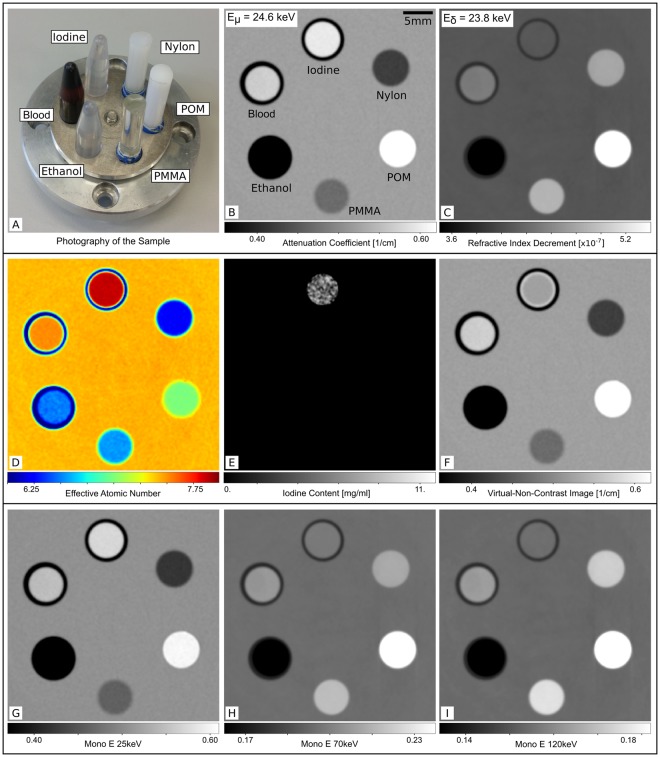Figure 1.
Measurements and results of virtual dual-energy processing for a material phantom. (A) Photography of the sample consisting of 6 different solid or liquid materials. From the reconstructed attenuation (B) and phase-contrast (C) data an effective interaction energy of was assigned via the literature value for the linear attenuation coefficient and the refractive index decrement of PMMA. The effective atomic number map (D) shows the distribution of Zeff ≈ 6.25 for Nylon to Zeff ≈ 7.99 for iodine. The quantitative iodine map (E) shows positive values of [I] ≈ 4.6 mg/ml only for the iodine solution. The virtual non-contrast image (F) is the conventional attenuation image where the identified iodine containing pixels are replaced with the attenuation value of water. The virtual monoenergetic image at (G) looks very similar to the conventional attenuation image. For the higher energies (H,I), the contribution of the electron density increases and the virtual monoenergetic image at looks very similar to the electron density image (which is simply proportional to the refractive index decrement image).

